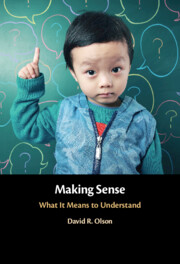Book contents
- Making Sense
- Making Sense
- Copyright page
- Dedication
- Contents
- Figures
- Tables
- Preface
- 1 An Introduction to the Puzzles of Understanding
- 2 Understanding As Feeling and As a Concept
- 3 The Linguistic Basis of Mind
- 4 Subjective Mental States
- 5 Objective Mental States
- 6 Intersubjectivity of Mental States
- 7 Identity Conditions for Feelings and Concepts
- 8 What “Understanding” Means
- 9 The Referential Scope of Understanding
- 10 Understanding and Children’s Theory of Mind
- 11 Understanding and Sense-Making
- 12 Understanding As a Learnable Skill
- 13 Understanding in Everyday Life
- 14 Ascriptivism and Cognitive Development
- References
- Index
5 - Objective Mental States
Truth in the Ascription of Understanding
Published online by Cambridge University Press: 21 April 2022
- Making Sense
- Making Sense
- Copyright page
- Dedication
- Contents
- Figures
- Tables
- Preface
- 1 An Introduction to the Puzzles of Understanding
- 2 Understanding As Feeling and As a Concept
- 3 The Linguistic Basis of Mind
- 4 Subjective Mental States
- 5 Objective Mental States
- 6 Intersubjectivity of Mental States
- 7 Identity Conditions for Feelings and Concepts
- 8 What “Understanding” Means
- 9 The Referential Scope of Understanding
- 10 Understanding and Children’s Theory of Mind
- 11 Understanding and Sense-Making
- 12 Understanding As a Learnable Skill
- 13 Understanding in Everyday Life
- 14 Ascriptivism and Cognitive Development
- References
- Index
Summary
In Chapter 4, I suggested that young children may experience a feeling of understanding, namely that something makes sense, before they acquire a concept of understanding. However, that subjective feeling may not meet an appropriate level of truth or correctness. Young children may feel they understand, when in fact they misunderstand. Adults recognize the possibility of misunderstanding. Thus, one of the identity conditions for understanding is that of truth or correctness.
- Type
- Chapter
- Information
- Making SenseWhat It Means to Understand, pp. 56 - 67Publisher: Cambridge University PressPrint publication year: 2022

